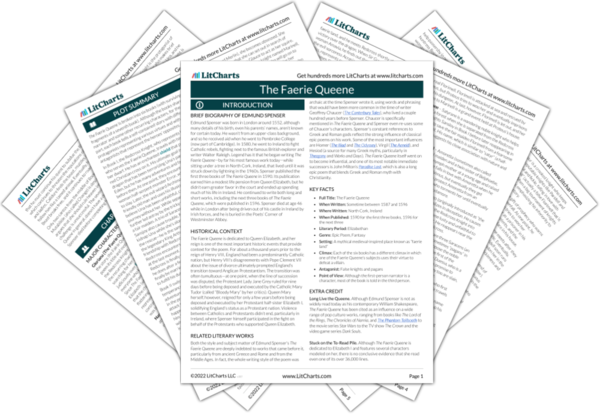As with previous passages, this section depicts a moment of Sir Guyon being genuinely amazed by what he sees, only to comprehend the horrors soon afterwards. This whole interlude with Mammon emphasizes that as much as wealth seems to give people power, it can also make people prisoners of Mammon in ways they don’t realize.
